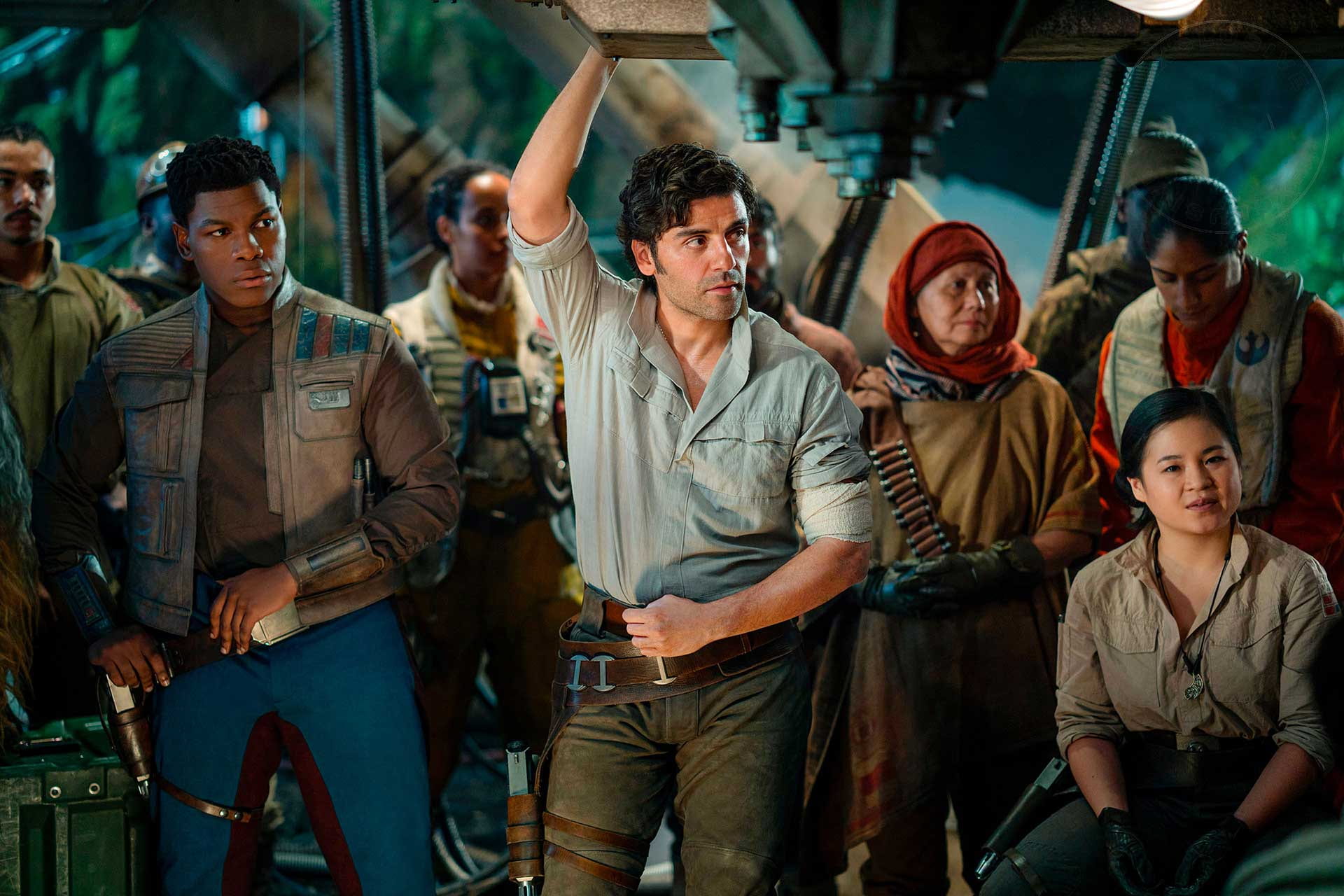One of the most anticipated movies of 2019 is finally here for the holiday season. J.J. Abrams’ Star Wars: The Rise of Skywalker is the final installment to the sequel trilogy as well as the Skywalker Saga that began all the way back in Episode I. This concluding episode follows the final battle between the Resistance and The First Order, Rey and Kylo Ren, and the Light and the Dark side.
Just like in The Return of the Jedi, there’s a significant time gap between this movie and its previous installment. Even though the classic crawling text intro catches us up, the movie spends a significant amount of time explaining the events that lead to the ultimate showdown. As a result, it feels disconnected from The Last Jedi, instead feeling like a sequel to The Force Awakens, which was coincidentally also directed by J.J. Abrams. Additionally, the pacing of the film is inconsistent. As portrayed in the final trailer, Palpatine is brought back to be the main villain of this movie. The Rebels go from planet to planet searching for him and finding clues that lead them to more clues. This scavenger hunt is too fast and rushed, primarily because the next step or clue is always spelled out for the characters. The pace then abruptly slows down in the last act and the final battle is far too stretched out.

There are a few recurring characters from previous films along with a couple of new characters. Ian McDiarmid reprises his role as Emperor Palpatine. His return is a surprise, but a welcome one nonetheless. Both Daisy Ridley and Adam Driver give amazing performances as Rey and Kylo Ren respectively. Although the movie primarily revolves around these three characters, John Boyega as Finn and Oscar Issac as Poe Dameron are great as supporting characters. However, they had more potential and their overall arc feels incomplete. This is also the last appearance of Carrie Fisher as Princess Leia and her character is given a satisfying end. There are also a few cameos by characters from previous trilogies.
The main criticism of the film is that it is plot-driven. Except for Rey and Kylo, most of the characters aren’t explored further than what they were in The Last Jedi. There aren’t a lot of scenes where we see character conflicts or dramatic decisions that add complexity to characters. The first act would have been interesting, for example, if there had been some emotional conflict between characters instead of a blind chase to find Palpatine. The film also attempts to ignore the previous installment in overriding the themes that were built in The Last Jedi.
One thing that is consistent throughout all the Star Wars movies is the amazing soundtrack. John Williams, the composer for the score, has used themes from across the franchise and also composed new pieces for this movie. Recurring character themes like The Imperial March and The Emperor’s Theme bring back the nostalgia from the original and prequel trilogies, while the newer additions accompany the fight sequences perfectly by making them feel energetic.

This review wouldn’t be complete without mentioning the lightsaber duels. Where the movie lacks in character development, it makes up for with action and visual effects. Dan Mindel, the cinematographer, and Abrams have reaffirmed their prowess with classic, fast-paced action sequences. This movie brings new elements to the classic lightsaber duels along with new force powers that make the duels interesting to watch. In one particular scene, Rey fights a TIE fighter with a lightsaber in what is a visually appealing and exciting scene to watch. The excellent cinematography and soundtrack make the lightsaber fights the most satisfying part of the movie.
Star Wars: The Rise of Skywalker seems good as a stand-alone film; however, it doesn’t fit well with the previous installments. The trilogy as a whole feels disjointed and inconsistent. The Skywalker Saga has finally come to an end, but, this is certainly not the end for the franchise. Lucasfilms is now focusing on other media with The Mandalorian and the recently announced Obi-Wan Kenobi TV series. There are still a lot of stories to tell that happened a long time ago in a galaxy far, far away.
3/5 STARS


